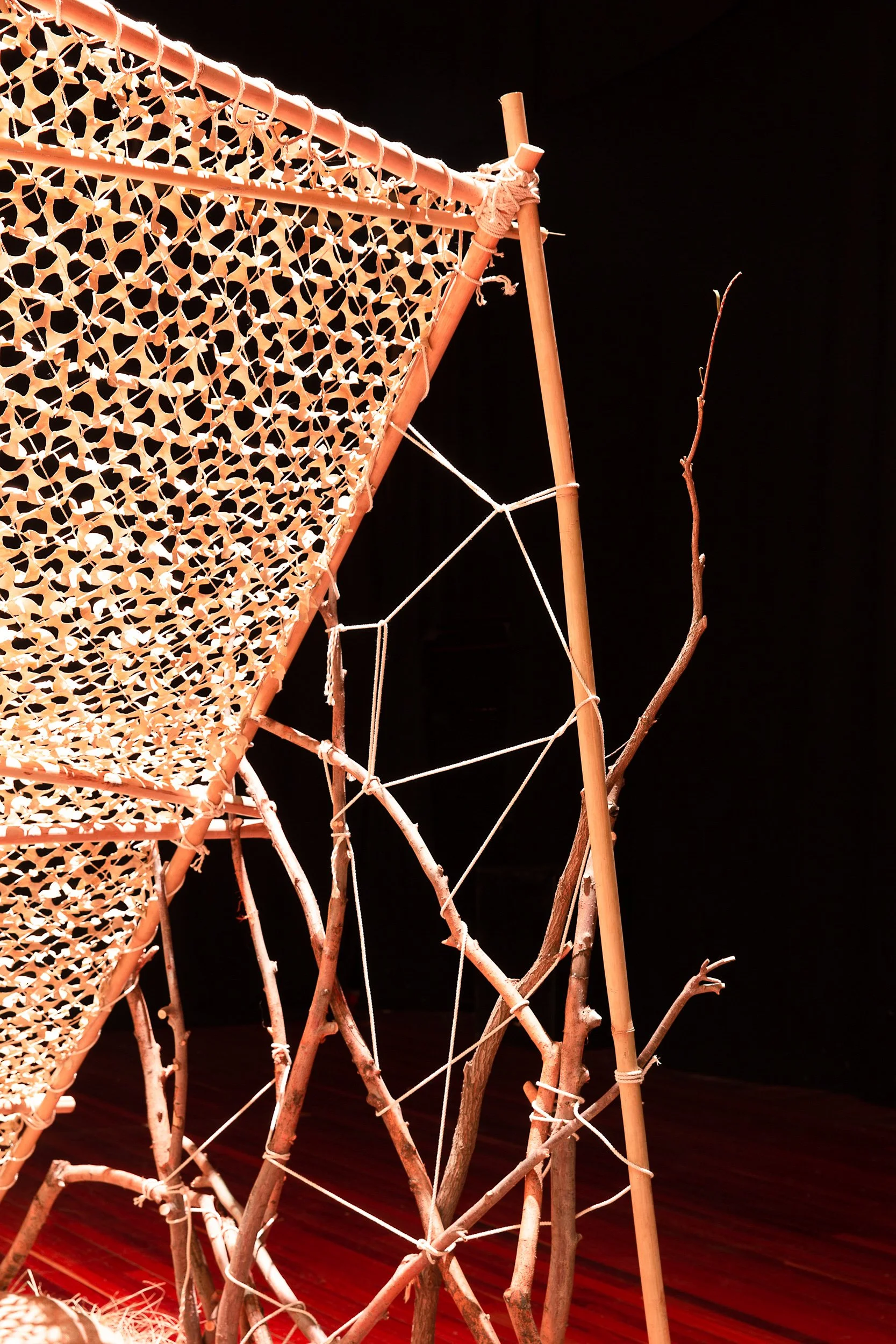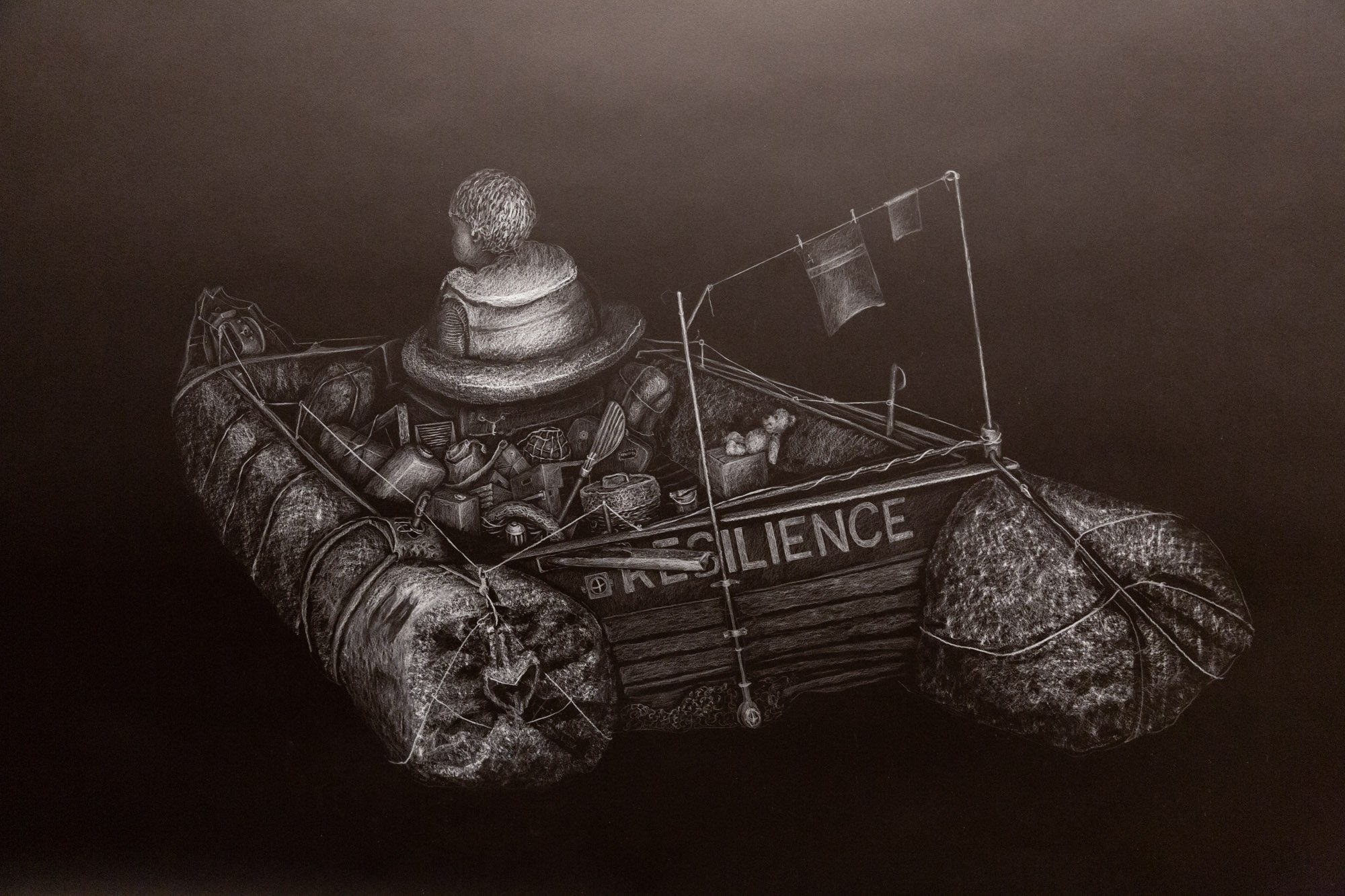
Our Approach
Grounded in First Nations knowledge systems and protocols, the Centre for Reworlding is a brave 100-year project. Our focus is working towards intergenerational justice, building creative resilience and applying intersectional collaborative approaches in how we work with others— so we can adapt climate disaster risk reduction and resilience strategies to meet the needs of diverse communities.
The Centre for Reworlding amplifies arts + culture’s leadership capacity in climate emergency, disaster risk-reduction and resilience contexts via
The development and presentation of multi-platform art projects;
Our innovative labs and workshops;
Cross-sectoral partnerships and trans-disciplinary collaborations;
Research and advocacy.
Building on decades of our combined practice-led research, networks and creative collaborative expertise in arts + culture, science, impact producing and climate resilience.
Cross-sectoral collaborations are key to our work and include partnerships with local councils, universities, galleries, disaster + climate emergency sector and artists from across disciplines + practices. Our work will reach new audiences through public talks, workshops, exhibitions, creative projects, and by expanding our vision and approach through meaningful conversations with non-creative sectors.
We are living in experimental times and therefore need new stories and methodologies to prepare and adapt as the complexity of risks and hazards and our increasing dependence on urban systems is resulting in greater vulnerability.
How we engage with this inevitable reality and prepare for such grounds is the Centre for Reworlding’s work. We know from our partners and collaborators that the climate emergency disaster risk reduction and resilience sector is not sophisticated enough to deal with long-term trajectories, inclusion, collaboration and mitigation.
Many know the WHAT and WHY, but lack the capacity, networks and HOW. Institutionalised ‘top-down’ approaches and existing ways of thinking/doing are failing communities to the increasing disaster risks and ways to adapt.
Without the luxury of time, there is an urgency in finding ways to collaborate, experiment, plan and shift the paradigm of climate emergency engagement and disaster resilience – and, this is where the Centre for Reworlding is speculating, holding, transforming and transmitting.
Artists
The Centre for Reworlding underscores the significant contribution creative practitioners can make in the climate emergency and disaster management ecosystem.
Impacts of the climate emergency will have lasting and compounding effects for everyone – including the diverse ways artists practice into the future. So, we (artists) are in a critical time as practitioners to reconsider our capacities and voices; how we untether from our ways of conventionally working within + across institutions; and, how we can adapt to the challenges + mitigate impacts. The Centre for Reworlding supports artists to reorient their practices through participatory programs and collaborative projects.

What can artists contribute to climate communication?
Climate change has always been more of an engagement and communications crisis than an environmental one.
Artists are meaning-makers, crafters of experience, provocateurs, adept at dealing with uncertainty and complexity, agile and responsive thinkers who see risk, failure and critique as fuel in creative processes; and, most often are resistant to maintaining the status quo.
Several studies [i] have shown that effective engagement results through a combination of cognition, affect and behaviour working complementarily and synergistically.
In order for the public to fully absorb climate science research [and emergency impacts], it must be actively communicated with appropriate language, metaphor, and analogy; combined with narrative storytelling; made vivid through visual imagery and experiential scenarios; balanced with scientific information; and delivered through trusted messengers in group settings [i]
Understanding how climate change may influence people both intellectually and emotionally helps transform sustainable knowledge into effective action and sustainable practice.
Artists are familiar with the translation of complex concepts that engage audiences via creative processes, experiences and artworks that embody both aesthetic value and social meaning. Therefore, working with artists and their wealth of resources (methods, tools and experiences) can contribute to the climate communication crisis, when supported and reinforced by other mechanisms.
References
[i] Centre for Research on Environmental Decisions. "The Psychology of Climate Change Communication: A Guide for Scientists, Journalists, Educators, Political Aides, and the Interested Public.", edited by Andria Cimino. New York: Columbia University, 2009.
Leiserowitz, Anthony "Climate Change Risk Perception and Policy Preferences: The Role of Affect, Imagery, and Values." Climate Change 77, no. 1-2 (2006): 45-72.
Lorenzoni, Irene, Sophie Nicholson-Cole, and Lorraine Whitmarsh. "Barriers Perceived to Engaging with Climate Change among the Uk Public and Their Policy Implications." Global Environmental Change 17, no. 3-4 (2007): 445-59.
Moser, Susanne C., and Lisa Dilling. "Making Climate Hot: Communicating the Urgency and Challenge of Global Climate Change." Environment 46, no. 10 (2004): 32-46.
O'Neill, Saffron, and Sophie Nicholson-Cole. ""Fear Won't Do It": Promoting Positive Engagement with Climate Change through Visual and Iconic Representations." Science Communication 30, no. 3 (2009): 355-79. http://scx.sagepub.com/content/30/3/355


